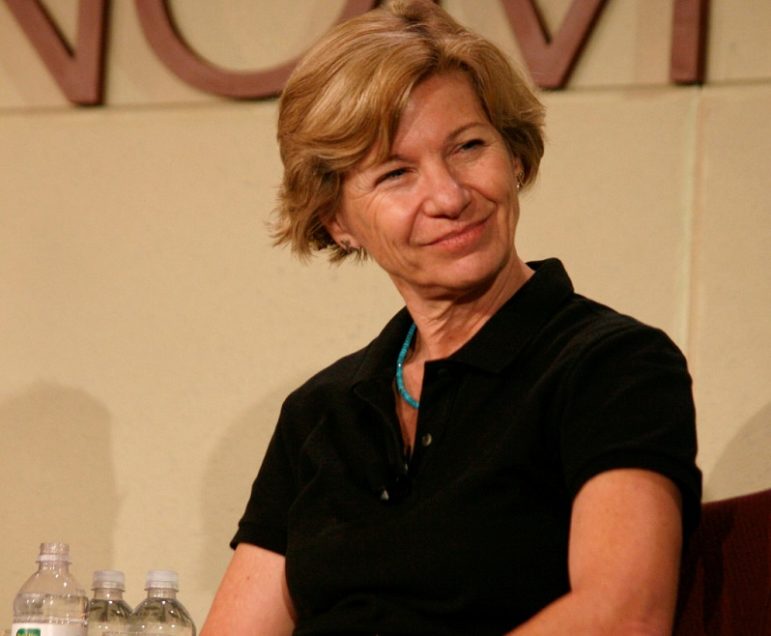
May 24, 2016; Education Week, “EdWeek Market Brief”
Sue Desmond-Hellmann, marking two years as the CEO of the Bill and Melinda Gates Foundation (BMGF), recently posted her vision of the kind of organization its founders wished the Foundation to become: “From the beginning, Bill and Melinda wanted their foundation to be a learning organization; one that evolves and course corrects based on evidence. We want to get continually smarter.” In one of their areas of major interest and investment, education, they seem to be widely missing this mark.
Desmond-Hellman asks, “What if all children—especially the poorest—had an equal opportunity to reach their full potential?” The Gates Foundation’s answer to this important question lies in in the failures of public education; for them, it’s the root cause of our growing societal inequity.
The Gates Foundation’s leadership believes firmly “that education is a bridge to opportunity in America.” In 2009, Bill Gates wrote:
Within the United States, there is a big gap between people who get the chance to make the most of their talents and those who don’t. Melinda and I believe that providing everyone with a great education is the key to closing this gap. If your parents are poor, you need a good education in order to have the equal opportunity that our founders promoted for every citizen.
The huge resources of the BMGF have been marshaled in support of a series of initiatives that ignore other possible reasons for our societal inequity as they seek to radically change how we teach our children and provide public education. Billions of dollars later, their results are marginal.
After more than five years of foundation support, in 2009, Bill Gates reported on the failure of their investment in “small schools”: “Many of the small schools that we invested in did not improve students’ achievement in any significant way.” The foundation’s lessons learned from this experience did not result in any questioning of their core belief that the answer to building a more equitable society would be found within our public schools. They just shifted their focus to increasing the number of charter schools, creating test-based teacher evaluation systems, improving school and student data management, and setting universal standards through the common core curriculum. Each has struggled, and none appear to have been effective.
Sign up for our free newsletters
Subscribe to NPQ's newsletters to have our top stories delivered directly to your inbox.
By signing up, you agree to our privacy policy and terms of use, and to receive messages from NPQ and our partners.
In 2014, the BMGF supported InBloom, an effort to create a national educational data management system, shut down after parents protested the collection and storage in the cloud of data on their children. Various states withdrew their support, and NPQ reported last September on the failure of one of these Gates-funded initiatives, Empowering Effective Teachers.
Desmond-Hellman has led the foundation as it has invested heavily in the effort to create a national set of learning standards, the Common Core Curriculum. Despite over $300 million in foundation funding, alliances with other large foundations, and strong support from the U.S. Department of Education, the effort has drawn bitter opposition and decreasing support. The strong push that the DoE gave states to implement the Common Core was seen as an unwanted intrusion of federal power into local schools. The use of Common Core to build a testing regimen for students and teachers was seen as disruptive and ineffective. Test data show little impact on bridging the inequity gap in states using Common Core.
Would not an organization that seeks to be a learning organization want to step back and consider whether their core assumptions are on target in light of their difficult experiences? Perhaps, but not the Gates Foundation. Desmond-Hellmann remains “optimistic that all students can thrive when they are held to high standards. And when educators have clear and consistent expectations of what students should be able to do at the end of each year, the bridge to opportunity opens. The Common Core State Standards help set those expectations.” Not a word about the impact of poverty, or the trauma of community violence, or systemic racism as even small considerations.
The problem as seen by Gates is not the strategy, but the high level of resistance they have found to their attempts to implement it:
Deep and deliberate engagement is essential to success. Rigorous standards and high expectations are meaningless if teachers aren’t equipped to help students meet them. Unfortunately, our foundation underestimated the level of resources and support required for our public education systems to be well equipped to implement the standards. We missed an early opportunity to sufficiently engage educators—particularly teachers—but also parents and communities so that the benefits of the standards could take flight from the beginning.
The evidence that their assumptions are flawed when it comes to ensuring all children have equal opportunities is very clear. What is not clear is whether the foundation’s leadership is brave enough to step away from such a large investment and make the strategic changes their experience demands if they are committed to their mission. Management guru Peter Senge has some words worth being heard in the offices of the Bill and Melinda Gates Foundation: “Breakthroughs come when people learn how to take the time to stop and examine their assumptions.” Is this too much to expect when children’s lives are in the balance?—Martin Levine












